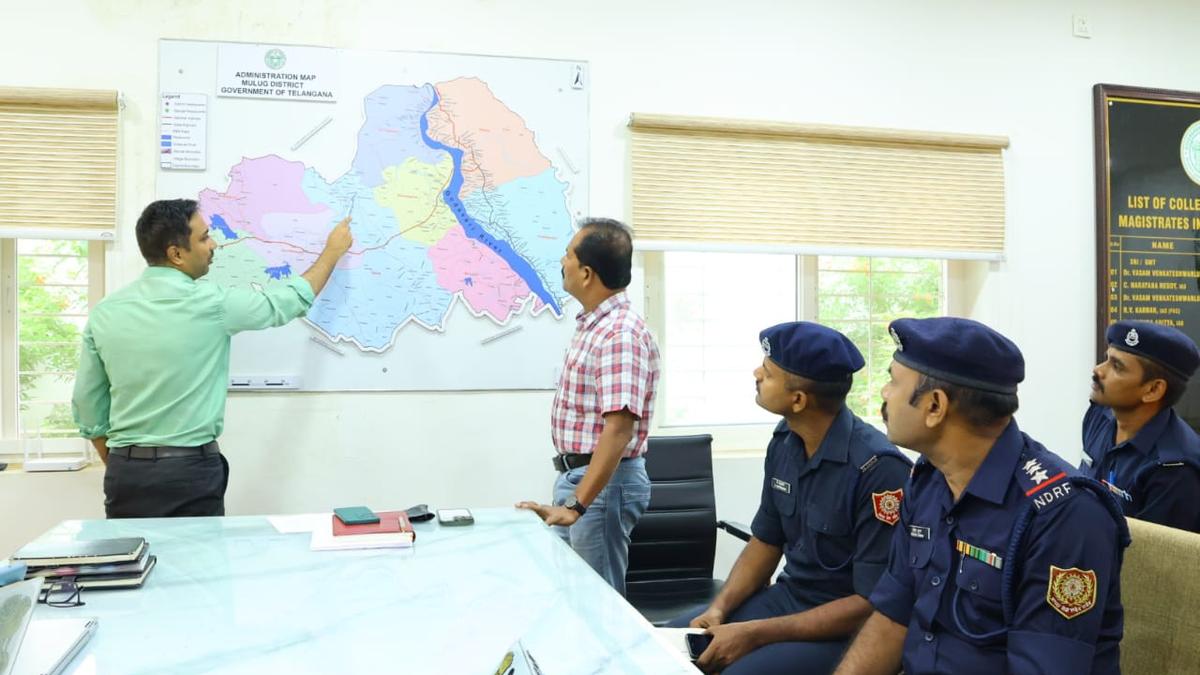Now Reading: Venkatapuram, Telangana Hit by 46 cm Rainfall in 28 Hours, Triggers Emergency Response
-
01
Venkatapuram, Telangana Hit by 46 cm Rainfall in 28 Hours, Triggers Emergency Response
Venkatapuram, Telangana Hit by 46 cm Rainfall in 28 Hours, Triggers Emergency Response

Swift Summary
- Heavy Rainfall Impact: Venkatapuram mandal in Mulugu district,Telangana,recorded 46 cm of rainfall within 28 hours (July 22-23,2025),as per Telangana Development Planning Society data.
- Disaster Preparedness: District administration activated emergency protocols; NDRF and SDRF teams stationed across the district with a round-the-clock control room.
- Preventive Measures:
– Vulnerable areas mapped; sandbags deployed near key locations.
– Irrigation tanks below capacity and Godavari river currently stable.
– Schools may declare holidays if accessibility issues arise; pregnant women and vulnerable individuals monitored closely.
– Medical teams on standby with ₹1 lakh financial advances for PHCs and ₹1.5 lakh for MPDOs to support operations.
- Ground Coordination: Special officers assigned to mandals managing relief via dedicated WhatsApp groups for real-time updates. Essential supplies pre-positioned in ration shops at mandal level.
- Public Safety Advisory: Residents encouraged vigilance, especially during thunder/lightning activity; waterlogged zones cordoned off to prevent accidents.
- Emergency Contact Services: Toll-free number provided – 18004257109.
Images:
- Collector T.S. Divakara discussing emergency measures (Photo Credit: special Arrangement).
- Additional image showing rainfall conditions in Hyderabad.
Indian Opinion Analysis
The heavy monsoon rains impacting Mulugu district underscore the importance of robust disaster preparedness at local governance levels in India, especially in vulnerable regions prone to extreme weather events during peak monsoon months. The proactive efforts by the administration-early identification of risk zones, strategic mapping of critical areas, deployment of response teams-reflect commendable readiness that may serve as a model for other districts nationwide.
However, challenges remain concerning long-term infrastructure resilience against such extreme rainfall events as climate variability increases their frequency globally. While immediate safety measures like cordoning off waterlogged zones prevent accidents effectively, India must prioritize sustainable solutions such as enhanced drainage systems or reinforced embankments to mitigate risks permanently.
The integration between field officers and centralized disaster management through digital communication tools like WhatsApp strengthens on-ground coordination-a sign that technology can complement administrative readiness efficiently when applied correctly.
this response highlights how anticipatory planning can reduce casualties while ensuring swift mobilization of resources during crises-a necessity given India’s diverse climatic patterns.























